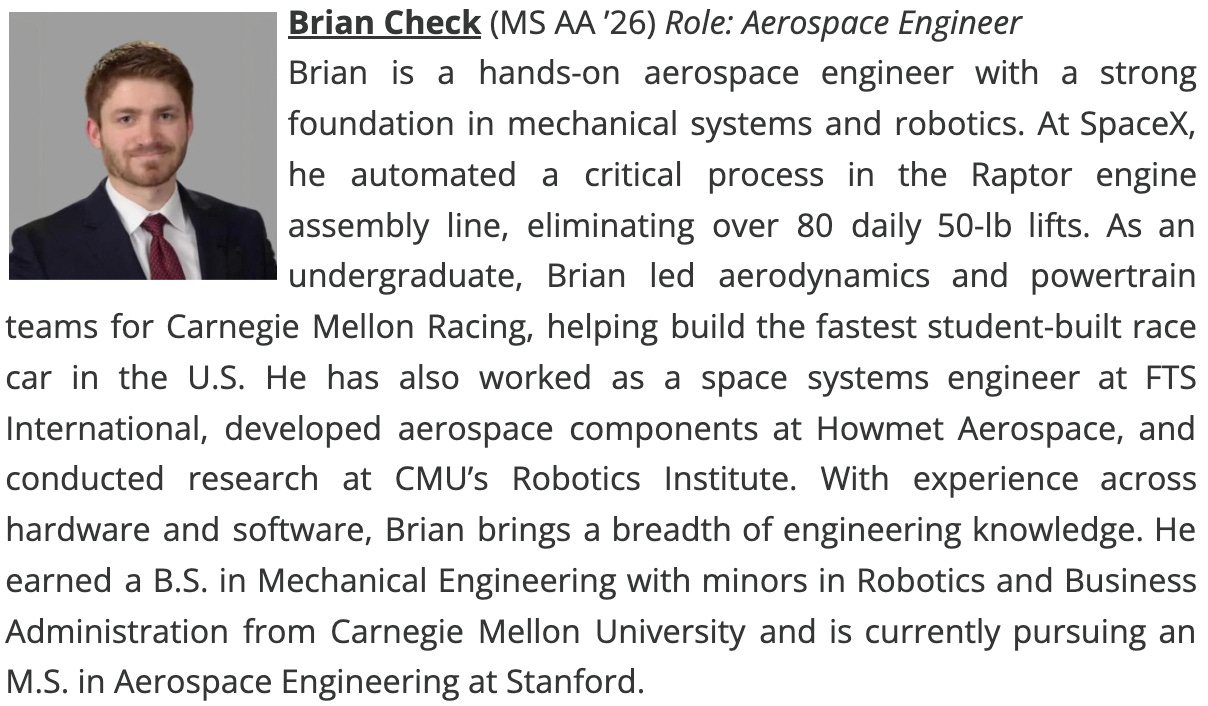H4D Team HyperWatch goes Hypersonic
Team HyperWatch is building a high-altitude sensing platform to give regional missile defense an early edge against hypersonic threats
As we continue to spotlight this spring’s Stanford Hacking for Defense® (H4D) cohorts, we now take a look at Team HyperWatch — one of eight student teams tackling national security challenges this term.
Tracking the Untrackable: HyperWatch’s Mission to Track Hypersonic Threats
Partnering with SpaceWERX, Team HyperWatch is addressing the pressing challenge of hypersonic object tracking. Their focus: analyzing the feasibility of building a system that provides fire-control quality tracking data of maneuverable, low-altitude hypersonic threats that evade traditional defense systems.
Hypersonic glide vehicles, with unpredictable trajectories and low infrared signatures, pose severe detection challenges. Ground-based systems struggle to detect low-flying threats gliding below the line of sight, spotting them too late for effective interception. Space-based satellites, slated for deployment no earlier than 2035, only provide coarse tracking, as HGVs appear as sub-pixel features, lacking sub-meter fire-control quality data for precise interception.
HyperWatch bridges this gap with low-cost, rapidly deployable high-altitude balloon networks, forming an air-based intermediary layer between ground and space. These controllable platforms enhance regional asset coverage, minimize handover errors, and bolster resilience. By integrating with existing architectures, HyperWatch delivers robust, real-time tracking to counter hypersonic threats effectively.
Meet Team HyperWatch
Insights & Lessons Learned
To date, HyperWatch has engaged with 100+ stakeholders from the Missile Defense Agency (MDA), Air Force, Defense Innovation Unit (DIU), and leaders in defense innovation and investment. Key takeaways include:
Golden Dome for America: The success of this project depends on close coordination with the Missile Defense Agency, which has been assigned acquisition responsibility for the Golden Dome initiative. The team has been asked to submit a white paper in response to the recently released Advanced Capability Concepts Solicitation to validate its initial feasibility study.
Flexible Contracting: Through meetings with AFWERX, SOSSEC and DIU, the team learned the value of flexible contracting mechanisms, such as Other Transaction Agreements (OTAs) and Open Topic SBIR/STTR solicitations.
Dual-Use: HyperWatch has also found its dual-use application in providing aid during test campaigns to hypersonic delivery systems developers.
In response, HyperWatch refined its Mission Model Canvas
Key Partners: SOSSEC for OTA support and partners like VALT and Xometry for testing and manufacturing
Deployment Strategy: Start with AFWERX SBIR and MDA MAA, build two test balloons, deploy in Guam, then support other theaters
Looking Ahead
The HyperWatch team will participate in the Defense Innovation Summer Fellowship, a premier 10 week venture incubator program, which will give them the opportunity to launch their company with momentum into the next development phase. The team will also attend the MDA-organized industry summit in Huntsville, Alabama.
Here are the other H4D Team blogs to date:
Team Hydra Strike: Good-enough systems, produced quickly at scale, will determine the outcome of future maritime conflicts
Team OmniComm: Creating Autonomous Multi-Network SatCom
Team ArgusNet: Turning Satellite Chaos into Clear Paths for Crisis Response
Team Omnyra: Building a Safer Future for Synthetic Biology
Team ChipForce: Team Looks to Build Incentives to Prioritize U.S. Critical Minerals
Team Neolens: Rewiring Maintenance for Mission Readiness
The Hacking for Defense (H4D) program has been taught at 70 colleges and universities around the world and has created 72 startups that have generated 660 jobs and raised more than $350 million. To learn more about the H4D course at Stanford University visit h4d.stanford.edu; to learn more about H4D around the world visit h4d.us. To learn more about The Hacking for Defense® Manual by Jeff Decker, PhD, visit Amazon.










